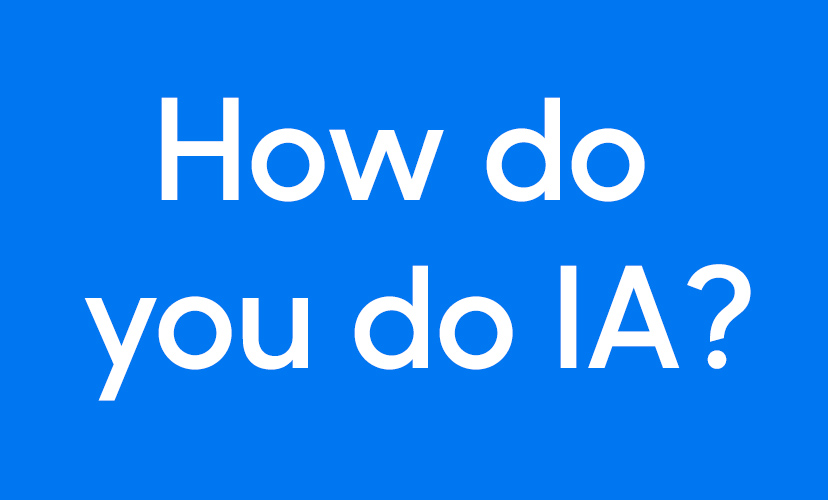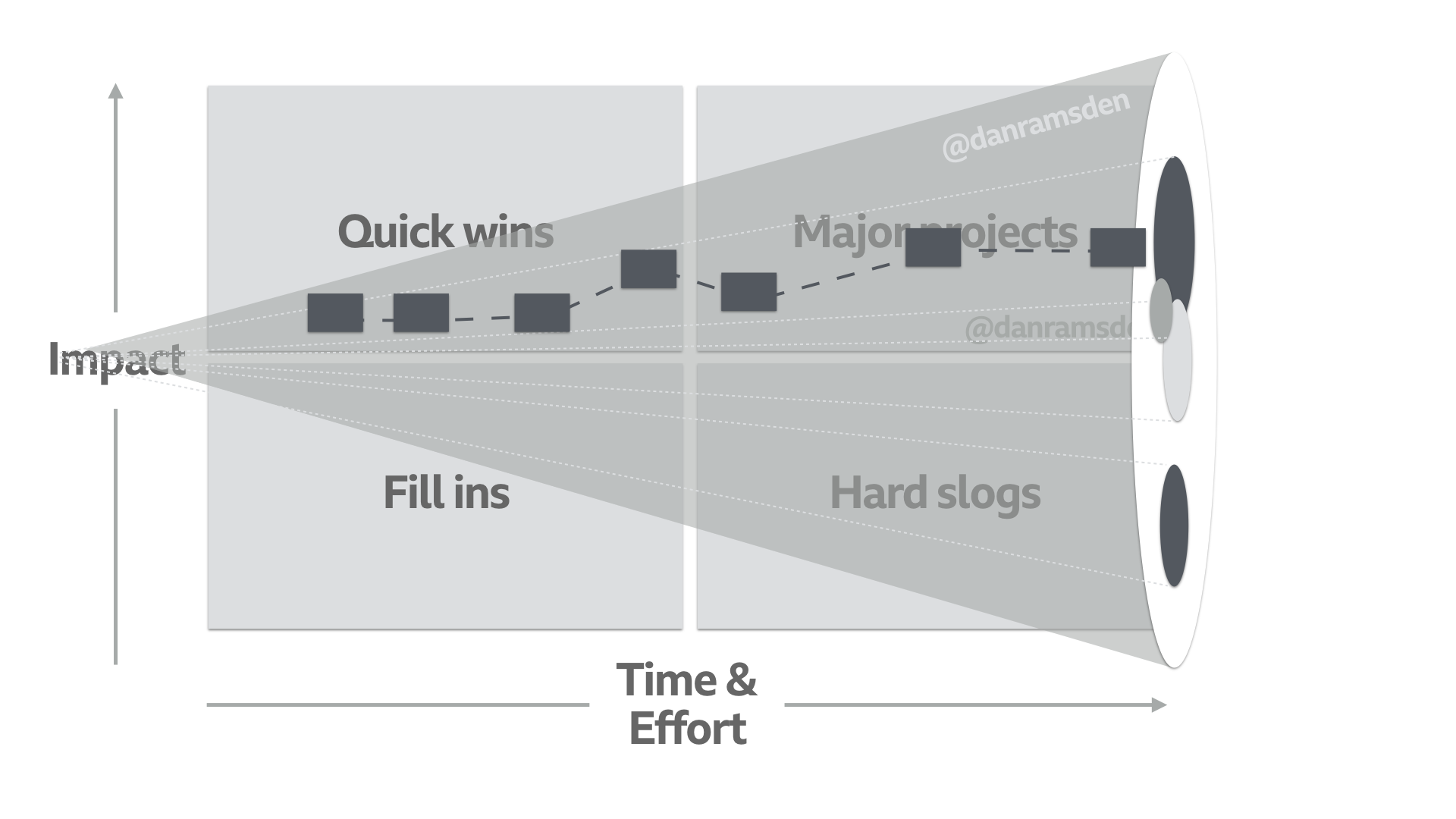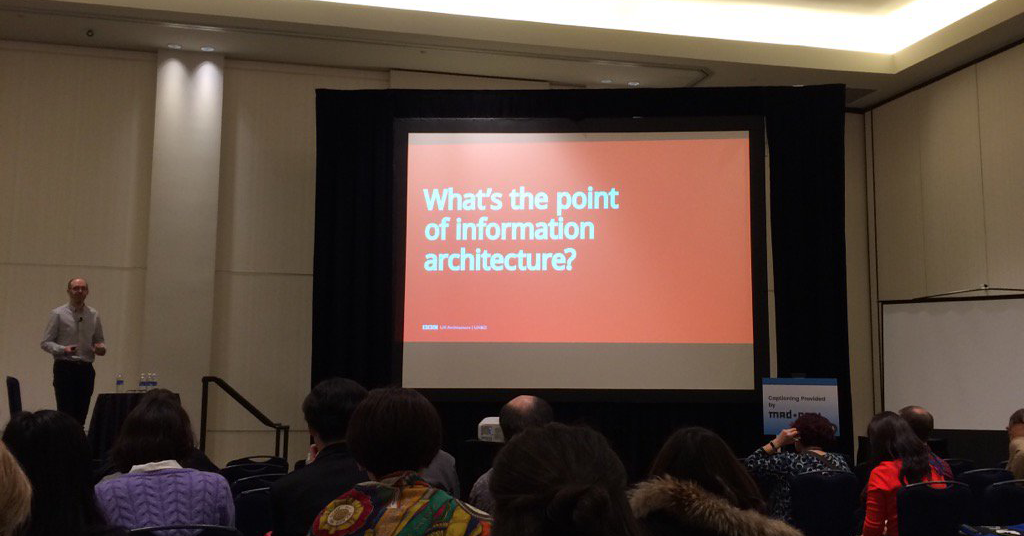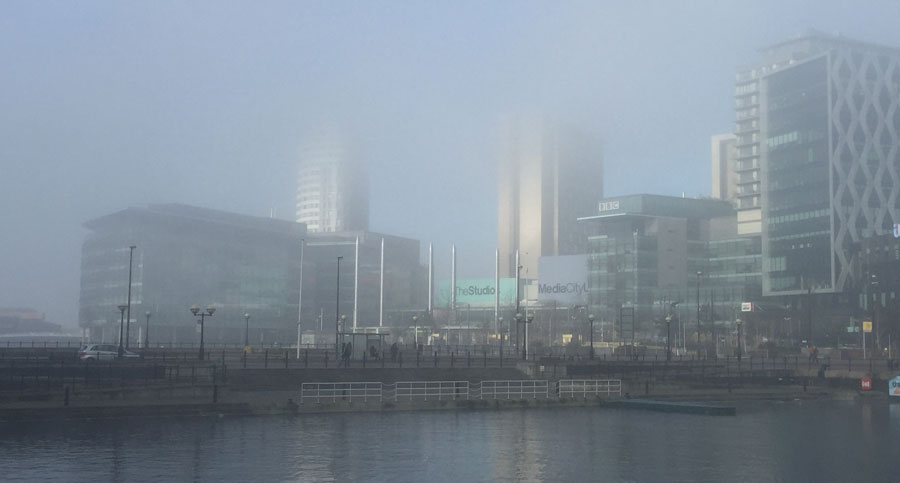-
Putting the audience first to boost your communication effectiveness
Summary: When we communicate we “encode” what we want to say based on our priorities and preferences. But the people we’re talking to also have preferences, knowledge and assumptions which can filter and alter what they actually hear. By thinking about our audience — and the preferences which shape how they receive and participate in…
-
Alternatives to the Double Diamond
If we always automatically reach for the Double Diamonds to start conversations and answer questions about design, we might miss opportunities to say something more useful.
-
The limitations of the Double Diamond
I have a love/hate relationship with the Double Diamond. I love the way it communicates two key ideas about design — (1) that design is as much about defining and creating boundaries around problems as it is about creating solutions and (2) design benefits from a dialogue between thinking styles, in this case Divergent creation/discovery and Convergent…
-
Consistently describing design
I’ve been writing about the design process, suggesting that different models can give us different perspectives on what we’re doing when we’re designing. I’ve suggested that design is a process of translation and balance – transforming ideas between abstract forms to concrete instantiations that people can experience. In my last post I used the metaphor…
-
The design process and the scaffolding within
In a post last week, I shared a definition for design. I said: “Design is the translation of intent into experiments designed to generate value.” That post is about how information architecture is the stable set of rules which govern the relationships within a design to bring internal coherence. Information architecture means designs are easier…
-
How do you do IA?

Being an information architect is hard. I think two of the biggest challenges to working as an IA are that we often work independently and every project is different. It’s hard to learn from others and getting experience takes time. There are definitely things that each IA can learn from looking at the practice of…
-
What did linked data ever do for us anyway? – from BBC Academy

Linked data is the super-structure over which content is stretched and experiences flow. It can switch our taxonomic thinking into ontological thinking. So we can move beyond classifying content using just hierarchies and start describing the real world richness that connects our content together. Linked data can power the online journeys of the future, and…
-
Pace layers, effort/impact and futures cones — three diagrams to help you plan as a UX architect

How do you think about and plan your portfolio of projects when you’re part of an internal design team? It’s sometimes hard to spot achievements in my job. It can also be tricky to plan where I can have most impact. Much of the work of an IA is relatively invisible. IAs spend their time…
-
Reflective practice in information architecture, IA Summit 2017

Photo credit Peter Morville Using the model At IA Summit in 2017 I shared a model that I’ve been using to consciously focus my attention on the challenges I face and the value I bring to teams and projects. The model is in the shape of a fish — a rough approximation of the divergent and convergent process I…
-
Not necessarily navigation

If you want to understand something, look towards the boundaries* The edges of things are interesting. IAs should be comfortable identifying that distinct boundary that marks the end of one thing and the beginning of another. We know the power of thinking about the ‘thingness’ that makes a thing the thing that it is. But…
-
Foggy finding – navigation with persistence

You can’t always get what you want… Information is a delicate, immaterial thing. Information-rich environments present challenges – to designers and actors navigating them. Environments intersect and overlap. Actors have different needs at different times. Information changes. Content and the spaces that contain it alter and evolve. The means to access information vary. Truth is…
-
Delightful discovery – navigating the unknown

The world is full of wonders yet to be discovered. Good navigation often results in discovery – ask John Mandeville. Sometimes we want to encourage and support an explorer mindset in our audience. We create new content, features and services. Information architects must be able to empower actors to find them. My second category focuses…
-
A model for navigation and information-seeking

Navigation is both a noun and a verb. Navigation describes the activity and behaviour of moving with intent. And, at least on the web, it’s the word we most often reach for to describe the tools that enable this movement. As an information architect I want people to be able to move through and across…
-
Concurrent information architecture

I often think of information architecture as providing ‘direction’ – it defines an axis along which an experience should flow. IA lays the foundation for a design – so it prescribes some of the shapes that will emerge as a product or service is designed and built. But I like to think it also helps to shape…